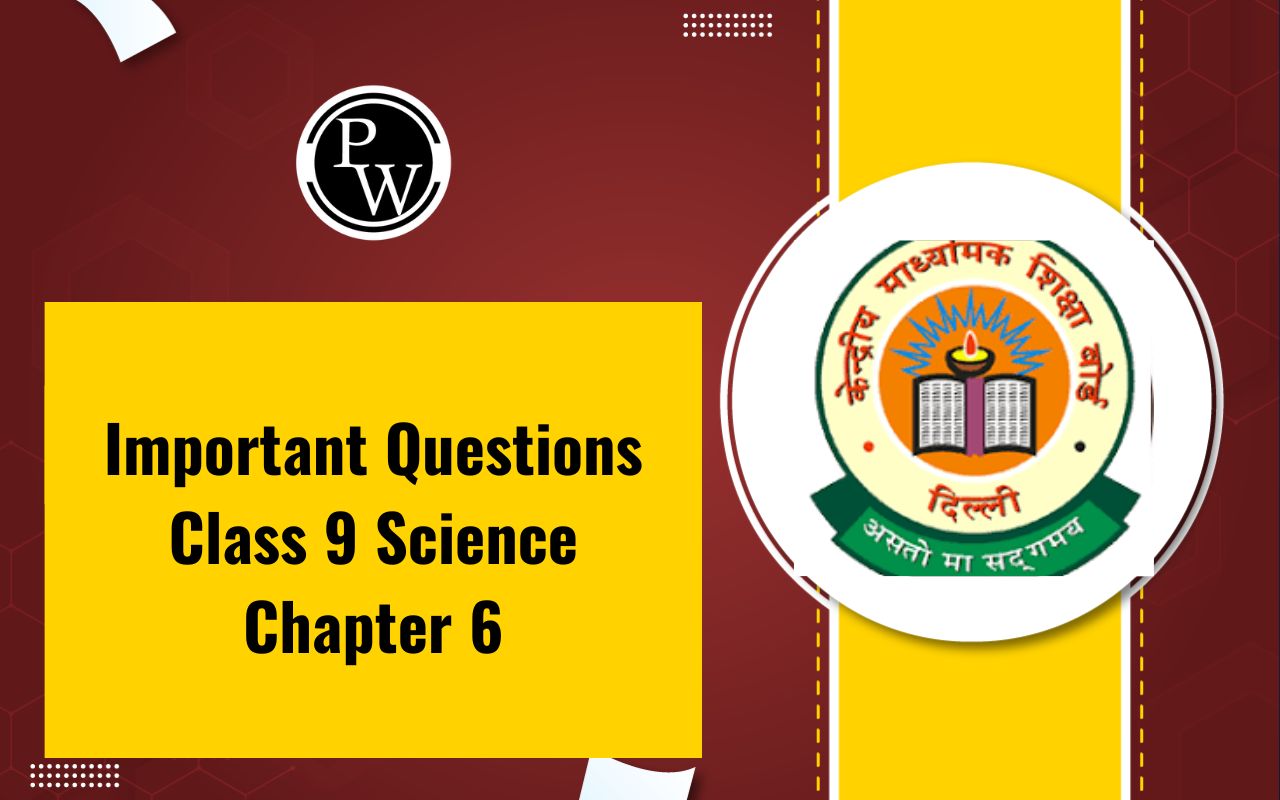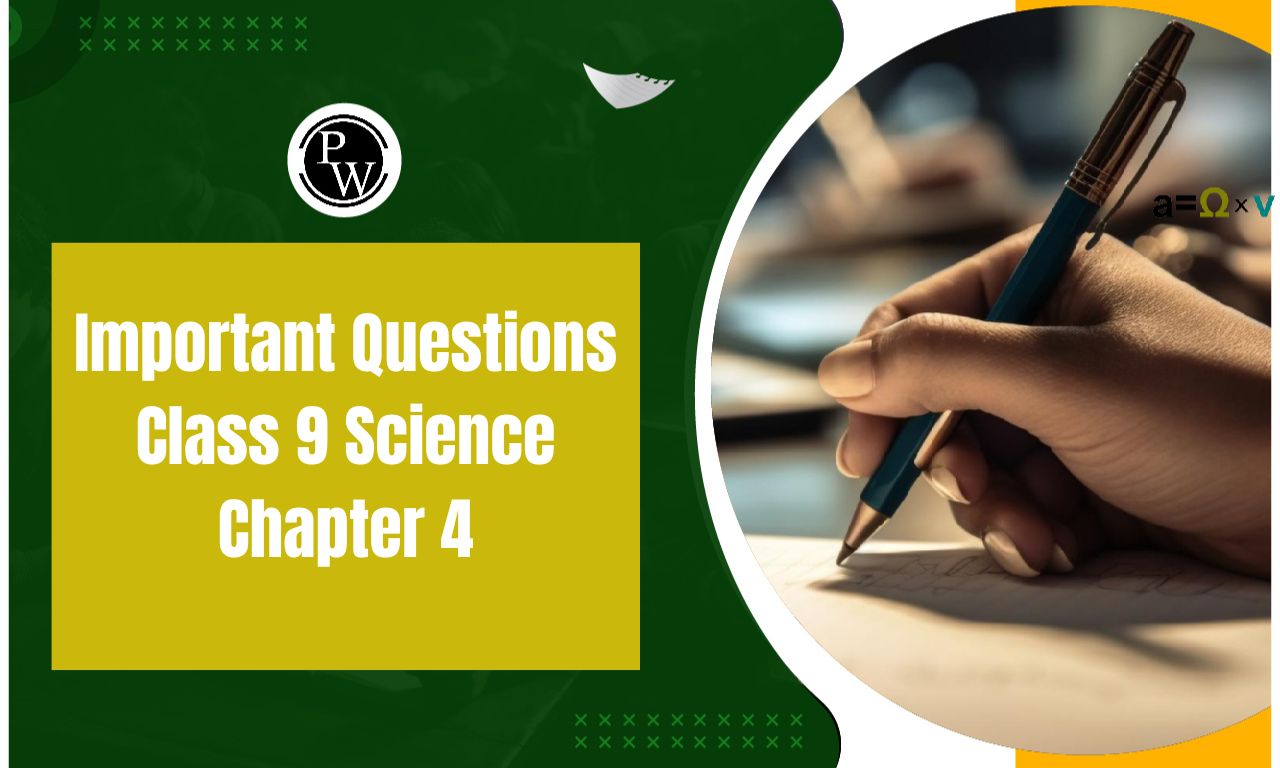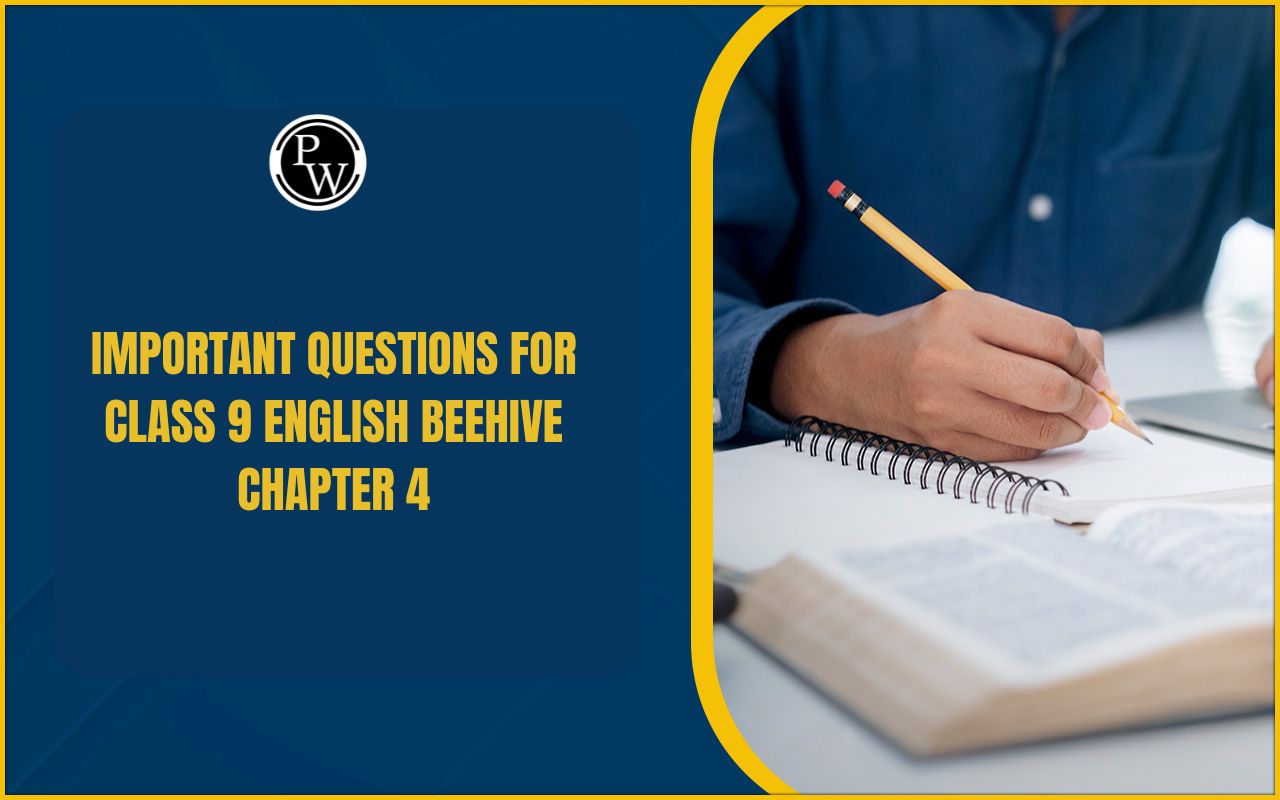
CBSE Class 9 Maths Syllabus 2025-26: The Central Board of Secondary Education (CBSE) has officially released the Class 9 Mathematics syllabus for the academic session 2025–26. This updated syllabus includes detailed information about all the chapters, unit-wise marks distribution, exam pattern, and internal assessment guidelines.
The syllabus is created to help students build a strong foundation in mathematical concepts and develop problem-solving skills. Students are advised to follow the latest syllabus closely to prepare effectively for their annual exams.
CBSE Class 9 Maths Syllabus 2025-26
The most recent CBSE Class 9 Maths Syllabus for the academic year 2025-26 is available for download by students. Check out the table below, which provides the CBSE Class 9 Maths Syllabus for 2025-26:
|
Unit No. |
Unit Name |
Sections / Topics |
Marks |
|
I |
Number Systems |
Real Numbers |
10 |
|
II |
Algebra |
Polynomials Linear Equations in Two Variables |
20 |
|
III |
Coordinate Geometry |
Coordinate Geometry |
04 |
|
IV |
Geometry |
Introduction to Euclid’s Geometry Lines and Angles Triangles Quadrilaterals Circles |
27 |
|
V |
Mensuration |
Heron’s Formula Surface Areas and Volumes |
13 |
|
VI |
Statistics |
Statistics |
06 |
|
Total (Theory) |
80 |
CBSE Class 9 Maths Syllabus Chapter 1 - Real Numbers
The first chapter of the CBSE Class 9 Maths Syllabus shows the technique of representing numbers on the number line with specific rules and symbols is known as the number system.CBSE Class 9 Maths Syllabus Chapter 1 - Real Numbers An illustration of numbers on a straight line with a predetermined space between them is known as a number line. The number system can be used for various mathematical operations, from counting the number of chocolates still in the box to performing complex scientific calculations. The below tables show the topics included in Chapter 1, Real Numbers.
| 1.1 | Introduction |
| 1.2 | Irrational Numbers |
| 1.3 | Real Numbers and Their Decimal Expansions |
| 1.4 | Representing Real Numbers on the Number Line |
| 1.5 | Operations on Real Numbers |
| 1.6 | Laws of Exponents for Real Numbers |
| 1.7 | Summary |
CBSE Class 9 Maths Syllabus Chapter 2 - Polynomial
The CBSE Class 9 Maths Syllabus focuses on polynomials, an important chapter in the syllabus. The word "polynomial" comes from the terms "poly," which means "many," and "nominal," which means "term.Both algebraic expressions and polynomials in mathematics are composed of variables, constants, and arithmetic operations. The only distinction between them is that the powers of algebraic expressions comprise irrational values.
The below tables show the topics included in Chapter 2, Polynomials.
| 2.1 | Introduction |
| 2.2 | Polynomials in One Variable |
| 2.3 | Zeros of a Polynomial |
| 2.4 | Remainder Theorem |
| 2.5 | Factorization of Polynomials |
| 2.6 | Algebraic Identities |
| 2.7 | Summary |
CBSE Class 9 Maths Syllabus Chapter 3 - Coordinate Geometry
Understanding coordinate geometry from CBSE Class 9 Maths Syllabus is vital since it uses curves and line graphs to connect geometry and algebra. In mathematics, coordinate geometry is helpful because it lets us locate points on any plane.In addition, it has uses in other academic fields, including calculus and trigonometry. Obtain a thorough understanding of coordinate geometry, including the Cartesian system, coordinate points, how to plot points on coordinate axes, quadrants with signs, and other topics.
The below tables show the topics included in Chapter 3, Coordinate Geometry.
| 3.1 | Introduction |
| 3.2 | Polynomials in One Variable |
| 3.3 | Zeros of a Polynomial |
| 3.4 | Summary |
CBSE Class 9 Maths Syllabus Chapter 4 - Linear Equation in Two Variables
The CBSE Class 9 Maths Syllabus recalls the two-variable linear equation's introduction from one-variable linear equations. Focus on ax+by+c=0 type linear equations. Establish the existence of an infinite number of solutions to a linear equation in two variables.Justify their representation as ordered pairs of real numbers by displaying the solutions and demonstrating their location on a line—a graph of linear equations in two variables. Examples include real-world concerns with ratio and proportion and simultaneous algebraic and graphical solutions. The below tables show the topics included in Chapter 4, Linear equation in two variables.
| 4.1 | Introduction |
| 4.2 | Linear Equations |
| 4.3 | Solution of a Linear Equation |
| 4.4 | Graph of a Linear Equation in Two Variables |
| 4.5 | Equations of Lines Parallel to X-axis and Y-axis |
| 4.6 | Summary |
CBSE Class 9 Maths Syllabus Chapter 5 - Introduction to Euclid's Geometry
Mathematicians specializing in geometry investigate the many sizes and shapes we see daily. Greek mathematician Euclid developed new axioms, postulates, and a definition for geometry.The CBSE Class 9 Maths Syllabus includes Euclid's method of geometry and how it relates to modern geometry in the introduction to the chapter on Euclid's geometry. The below tables show the topics included in Chapter 5, Introduction to Euclid's Geometry.
| 5.1 | Introduction |
| 5.2 | Euclid’s Definitions, Axioms, and Postulates |
| 5.3 | Equivalent Versions of Euclid’s Fifth Postulate |
| 5.4 | Summary |
CBSE Class 9 Maths Syllabus Chapter 6 - Lines and Angles
The combination of lines and angles creates the majority of these shapes. In contrast to an angle, created by combining two rays at a point known as the vertex, a line is a group of points with length but no width. In the CBSE Class 9 Maths Syllabus, geometry introduces various lines and angles, which we will study in this article. The notes on lines and angles include examples and cover a variety of ideas, including parallel lines, transversal angles, intersecting lines, and internal angles. The below tables show the topics included in Chapter 6, Lines and Angles.| 6.1 | Introduction |
| 6.2 | Basic Terms and Definitions |
| 6.3 | Intersecting Lines and Non-intersecting Lines |
| 6.4 | Pairs of Angles |
| 6.5 | Parallel Lines and a Transversal |
| 6.6 | Lines Parallel to the same Line |
| 6.7 | Angle Sum Property of a Triangle |
| 6.8 | Summary |
CBSE Class 9 Maths Syllabus Chapter 7 -Triangles
Since they are used in higher education, the ideas presented in Triangles in CBSE Class 9 Maths Syllabus are crucial. Students are urged to understand the topic for this reason fully. The "Triangles" chapter in the NCERT maths textbook for class 9 is included to instruct pupils on the following ideas. The below tables show the topics included in Chapter 7, Triangles.| 7.1 | Introduction |
| 7.2 | Congruence of Triangles |
| 7.3 | Criteria for Congruence of Triangles |
| 7.4 | Some Properties of a Triangle |
| 7.5 | Some More Criteria for Congruence of Triangles |
| 7.6 | Inequalities in a Triangle |
| 7.7 | Summary |
CBSE Class 9 Maths Syllabus Chapter 8 - Quadrilaterals
A shape with four sides is referred to as a quadrilateral. In the chapter on Quadrilaterals of the CBSE Class 9 Maths Syllabus, the various forms of quadrilaterals, including square, rectangle, and parallelogram attributes, are mentioned in detail. The below tables show the topics included in Chapter 8, Quadrilaterals.| 8.1 | Introduction |
| 8.2 | Angle Sum Property of a Quadrilateral |
| 8.3 | Types of Quadrilaterals |
| 8.4 | Properties of a Parallelogram |
| 8.5 | Another Condition for a Quadrilateral to be a Parallelogram |
| 8.6 | The Mid-point Theorem |
| 8.7 | Summary |
CBSE Class 9 Maths Syllabus Chapter 9 - Circles
All points form a circle spaced the same distance apart from a fixed point. In this chapter of the CBSE Class 9 Maths Syllabus , we learn more about the different parts of a circle and their associated theorems. The below tables show the topics included in Chapter 9, Circles.| 9.1 | Introduction |
| 9.2 | Circles and its Related Terms - A Review |
| 9.3 | Angle Subtended by a Chord at a Point |
| 9.4 | Perpendicular from the Centre to a Chord |
| 9.5 | Circle through Three Points |
| 9.6 | Equal Chords and their Distances from the Centre |
| 9.7 | Angle Subtended by an Arc of a Circle |
| 9.8 | Cyclic Quadrilaterals |
| 9.9 | Summary |
CBSE Class 9 Maths Syllabus Chapter 10 - Heron’s Formula
A triangle is a closed three-dimensional figure in geometry. You will discover Heron's formula in the CBSE Class 9 Maths Syllabus , which is used to calculate the area of triangles. You will also discover in detail how to calculate the areas of different polygons using Heron's formula. The below tables show the topics included in Chapter 10, Heron’s Formula.| 10.1 | Introduction |
| 10.2 | Area of a Triangle – by Heron’s Formula |
| 10.3 | Application of Heron’s Formula in finding Areas of Quadrilaterals |
| 10.7 | Summary |
CBSE Class 9 Maths Syllabus Chapter 11 - Surface areas and volumes
This CBSE Class 9 Maths Syllabus discusses and thoroughly explains the surface area and volume formulas for various three-dimensional geometries. The surface area of any three-dimensional shape can be broadly divided into three categories: curved surface area (CSA), lateral surface area (LSA), and total surface area (TSA). 3D shapes like a cube, cuboids, cones, cylinders, and so on can be computed. The below tables show the topics included in Chapter 11, Surface Areas and volumes| 11.1 | Introduction |
| 11.2 | Surface Area of a Cuboid and a Cube |
| 11.3 | Surface Area of a Right Circular Cylinder |
| 11.4 | Surface Area of a Right Circular Cone |
| 11.5 | Surface Area of a Sphere |
| 11.6 | Volume of a Cuboid |
| 11.7 | Volume of a Cylinder |
| 11.8 | Volume of a Right Circular Cone |
| 11.9 | The Volume of a Sphere |
| 11.10 | Summary |
CBSE Class 9 Maths Syllabus Chapter 12 - Statistics
Statistics is a field of study that focuses on gathering, presenting, interpreting, and analyzing data. In this chapter of the CBSE Class 9 Maths Syllabus, we learn more about the basics of statistics. The below tables show the topics included in Chapter 12, Statistics.| 12.1 | Introduction |
| 12.2 | Collection of Data |
| 12.3 | Presentation of Data |
| 12.4 | Graphical Representation of Data |
| 12.5 | Measures of Central Tendency |
| 12.6 | Summary |
CBSE Class 9 Maths Syllabus 2025-26 PDF
The CBSE Class 9 Maths Syllabus 2025–26 has been officially released by the Central Board of Secondary Education.
This updated syllabus outlines all the important units, topics, and marks distribution that students need to focus on for the academic year. It also includes the exam pattern and internal assessment guidelines, helping students plan their preparation effectively.
For your convenience, the complete syllabus is available in PDF format. You can download the official CBSE Class 9 Maths Syllabus 2025–26 PDF from the link provided below.
Do you need help with your homework or preparing for exams?
Study without using the internet
Tips to Prepare CBSE Class 9 Maths
-
Know the Syllabus Well: Start by understanding the unit-wise weightage and topics. Focus more on units with higher marks like Geometry and Algebra.
-
Make a Study Schedule: Divide your time across all chapters. Allocate more time to tough topics and revise regularly.
-
Understand Concepts, Don’t Just Memorize: Build a strong base in concepts like Real Numbers, Linear Equations, and Triangles. Use examples and visual aids wherever possible.
-
Practice Daily: Mathematics needs consistent practice. Solve questions from your textbook, exemplar, and previous years' papers.
-
Revise Formulas: Maintain a separate notebook for important formulas and theorems. Go through them regularly.
-
Attempt Sample Papers & Mock Tests: Solve CBSE sample papers and take timed mock tests to improve speed and accuracy.
CBSE Class 9 Maths Syllabus FAQs
How many units are in the CBSE Class 9 Mathematics Syllabus 2025-26?
Are the Class 9 NCERT Math textbooks compatible with the CBSE Math Class 9 Syllabus?
Is maths in class 9 simple or difficult?
What is the CBSE Class 9 Maths Syllabus 2025-26?










